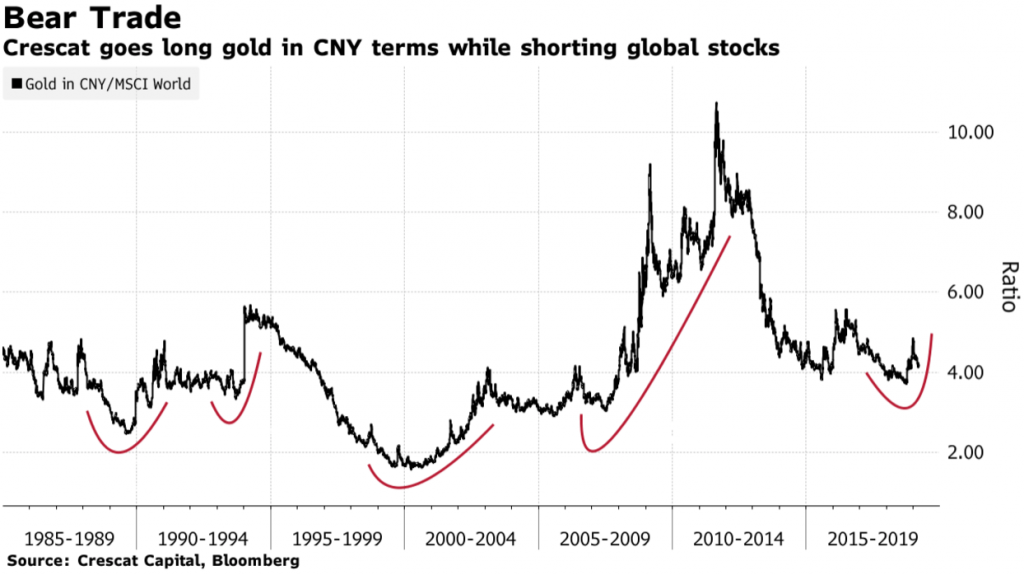The hedge fund—which returned a whopping 41% last year—has a warning for investors.
According to one of last year’s best performing hedge funds, the “trade of the century” is to buy gold and sell stocks as risk assets are headed for another meltdown.
Denver-based Crescat Capital—which only has around $50 million in assets under management but has a history of outperforming the S&P 500 and last year alone returned about 41%—says that it’s only a matter of time before this bearish bet will pay off in a major way, and the investment firm is ready to capitalize on the end of the economic cycle as indicators are flashing that a recession is right around the corner.
Crescat’s global macro analyst, Tavi Costa, said that while the consensus is that a recession will start in 2020 or 2021, “We believe it’s a lot closer than that and we have a number of macro timing indicators that we look at.”

The hedge fund’s strategy for the last three months has been shorting global equities while going long on gold in yuan terms. Crescat uses the MSCI World Index in models to visualize the trade. However, for its short positions, goes a bit deeper by selecting individual stocks and ETFs to bet against.
The firm cites extensive selling of stocks by corporate insiders as a warning sign of a possible stock bubble bursting. Back in 2017, these same investors were selling shares while the S&P 500 continued to climb. The same thing happened again in 2018, but Crescat warned in a note to clients from last weekend that the smart money selling for “the third time should be the charm for the stubborn U.S. market” to start heading down.
The firm warned back in February that “We are heading into a bear market in 2019 that will coincide with the start of a global recession that will not be officially acknowledged until well after it began,” Crescat’s CIO Kevin Smith said in the hedge fund’s year-end letter to investors. “We believe September 2018 marked the essential peak of the U.S. stock market for the current economic cycle.”
“2018’s valuation records are astounding in that they show the S&P 500 to be more fundamentally overvalued than it was at the prior two historic stock market valuation peaks in 1929 and 2000, bona fide speculative manias,” Smith warned. “We believe most investors remain oblivious to these valuation facts.”
Global equities have rallied so far this year on the hopes of the U.S. and China reaching a trade deal and as the Fed takes a more dovish stance. However, the fund points out that U.S. economic data is deteriorating and there are still inversions across the Treasury yield curve. Crescat found that, by measuring multiple yield spreads across the curve from Fed Funds to 30-year Treasury bonds, that almost 45% of the curve is inverted.
“The last two times the credit markets had such a high distortion, asset bubbles began to fall apart shortly thereafter,” Crescat wrote.
As for the rebound in stocks in the first few months of the year, Crescat’s Costa says the firm has high conviction that it’s just a bear market rally.
“Soon the buy-the-dip mentality and bull-market greed will turn to fear. Selling will beget more selling. That’s how bear markets work,” Crescat wrote. “There is so much more ahead to profit from the short side of the market. The bear-market rally is running out of steam!”
“We’re not perms-bears by any means,” Costa said. “This is a very tactical bearish view right now, and hopefully when the market turns, we want to also time the bull market at some point.”